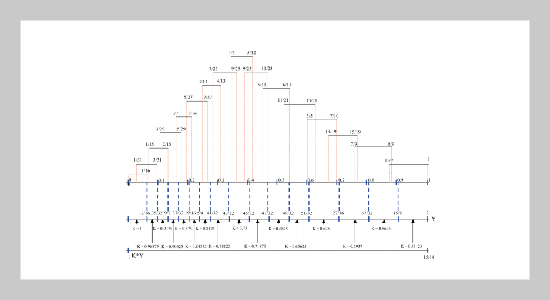REFERENCES
- [1] “IEEE Standard for Binary Floating Point Arithmetic,” ANSI/IEEE Standard 754-1985, IEEE Computer Society (1987).
- [2] Robertson, J. E., “A New Class of Digital Division Methods,” IRE Trans. on Electronic Computers, Vol. 7, pp. 218222 (1958).
- [3] Tocher, T. D., “Techniques of Multiplication and Division for Automatic Binary Computers,” Quarterly J. Mech. App. Math., Vol. 2, pp. 364384 (1958).
- [4] Svoboda, A., “An Algorithm for Division,” Information Processing Machines, Vol. 9, pp. 183190 (1963).
- [5] Tung, C., “A Division Algorithm for Signed-Digit Arithmetic,” IEEE Trans. on Computers, Vol. 17, pp. 887889 (1968).
- [6] Oberman, S. F. and Flynn, M. J., “Design Issues in Division and Other Floating-Point Operations,” IEEE Trans. on Computers, Vol. 46, pp. 154161 (1997).
- [7] Srinivas, H. R., Parhi, K. K. and Montalvo, L. A, “Radix 2 Division with Over-Redundant Quotient Selection,” IEEE Trans. on Computers, Vol. 46, pp. 8592 (1997).
- [8] Burgess, N., “Prescaled Maximally-Redundant Radix-4 SRT Divider,” Electronics Letters, Vol. 30, pp. 1926 1928 (1994).
- [9] Srinivas, H. R. and Parhi, K. K., “A Fast Radix-4 Division Algorithm and Its Architecture,” IEEE Trans. on Computers, Vol. 44, pp. 826831 (1995).
- [10] Montuschi, P. and Ciminiera, L., “Design of a Radix-4 Division Unit with Simple Selection Table,” IEEE Trans. on Computers, Vol. 41, pp. 16061611 (1992).
- [11] Fenwick, P., “High-Radix Division with Approximate Quotient-digit Estimation,” Journal of Universal Computer Science, Vol. 1, pp. 2-23, http://www.jucs.org/ jucs_1_1/high_radix_division_with/paper.html (1995).
- [12] Kantabutra, V., “A New Algorithm for Division in Hardware,” in Proceeding of IEEE International Conference on Computer Design (ICCD), pp. 551556 (1996).
- [13] Burgess, N. and Williams, T., “Choices of Operand Truncation in the SRT Division Algorithm,” IEEE Transactions on Computers, Vol. 44, pp. 933938 (1995).
- [14] Montalvo, L. A., Parhi, K. K. and Guyot, A., “New Svoboda-Tung Division,” IEEE Trans. on Computers, Vol. 47, pp. 10141020 (1998).
- [15] Mekhallalati, M. C. and Ibrahim, M. K., “New High Radix Maximally-Redundant Signed Digit Adder,” IEEE International Symp. on Circuit and System, Vol. 1, pp. 459462 (1999).
- [16] Nannarelli, A. and Lang, T., “Low-Power Division: Comparison among Implementation of Radix 4, 8 and 16,” 14th IEEE Symp. on Computer Arithmetic, p. 60 (1999).
- [17] Tsai, M.-S., “The Design and Implementation of a High Speed Radix-4 Carry Free Division Architecture,” Master Thesis, Tamkang University, June (2000).
- [18] Ercegovac, M. D. and Lang, T., “Simple Radix-4 Division with Operands Scaling,” IEEE Trans. on Computers, Vol. 39, pp. 12041208 (1990).
- [19] Montuschi, P. and Ciminiera, L., “Over-Redundant Digit Sets and the Design of Digit-by-Digit Units,” IEEE Trans. on Computers, Vol. 43, pp. 269279 (1994).
- [20] Wang, X. and Nelson, B. E., “Tradeoffs of Designing Floating-Point Division and Square Root on Virtex FPGAs,” Proc. 11th Annual IEEE Symposium on FieldProgrammable Custom Computing Machines, Vol. 2, pp. 195203 (2003).
- [21] Burgess, N., “A Fast Division Algorithm for VLSI,” in Proc. IEEE Int’l Conf. Computer Design: VLSI in Computers and Processors, Boston, pp. 560563 (1991).
- [22] Kuninobu, S., Nishiyama, H. E. T., Tanaguchi, T. and Takagi, N., “Design of High Speed MOS Multiplier and Divider Using Redundant Binary Representation,” Proc. 8th Symp. Computer Arithmetic, Como, Italy, pp. 8086 (1987).
- [23] Ercegovax, M. D. and Lang, T., Division and Square Root. Norwell, Mass.: Kluwer Academic (1994).
- [24] Montuschi, P. and Lang, T., “Boosting Very-High Radix Division with Prescaling and Selection by Rounding,” IEEE Trans. on Computers, Vol. 50, pp. 1327 (2001).
- [25] Rice, E. and Hughey, R., “A New Iterative Structure for Hardware Division: The Parallel Paths Algorithm,” 16th IEEE Symposium on Computer Arithmetic (ARITH’03), pp. 5462 (2003).
- [26] Moon, J.-S., Kwon, T.-J., Sondeen, J. and Draper, J., “An Area-Efficient Standard-Cell Floating-Point Unit Design for a Processing-In-Memory System,” Proc. of the Conference on European Solid-State Circuits, pp. 5760 (2003).
- [27] Nannarelli, A. and Lang, T., “Low-Power Radix-8 Divider,” Proc. of International Conference on Computer Design, pp. 420426 (1998).
- [28] Kwon, T.-J., Moon, J.-S., Sondeen, J. and Draper, J., “A 0.18 �m Implementation of a Floating-Point Unit for a Processing-In-Memory System,” IEEE International Symp. on Circuit and System, Vol. 2, pp. 453 456 (2004).
- [29] Chiang, J.-S. and Tsai, M.-S., “A Radix-4 New Svobota-Tung Divider with Constant Timing Complexity for Prescaling,” Kluwer Journal of VLSI Signal Processing, Vol. 33, pp. 117124 (2003).
















